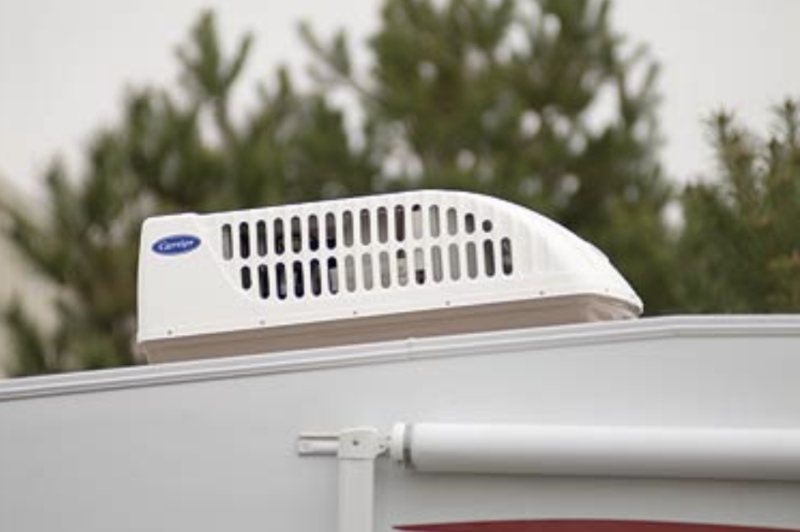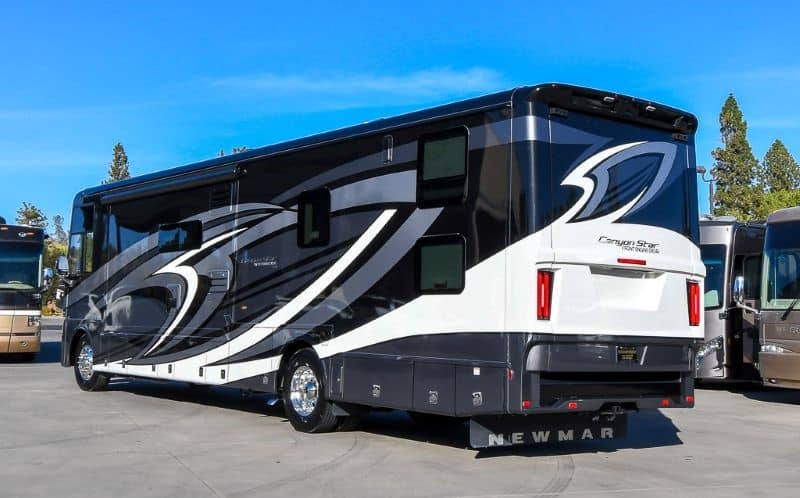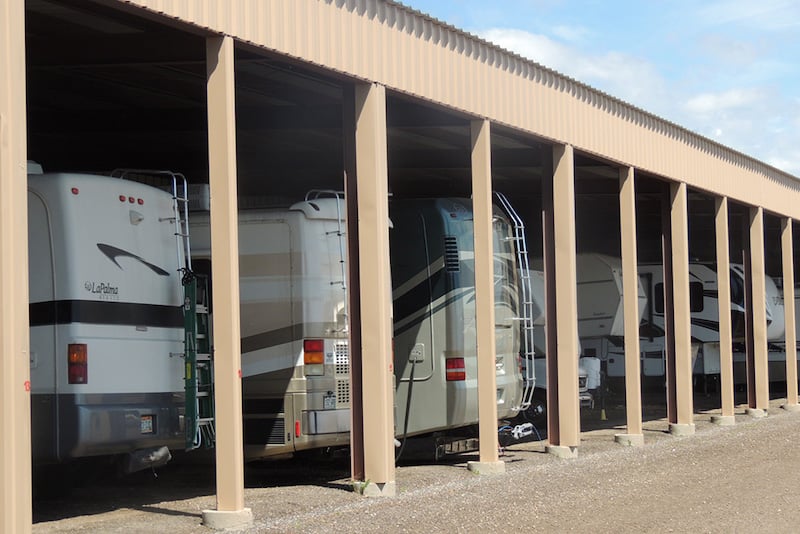Knowing how much freon a motorhome A/C holds inside the compressor and tubing is helpful. This article shares some helpful information on freon refrigerants and how to properly recharge your motorhome A/C unit for a cool travel experience.
What Is Freon and What Does It Do?
Freon refers to a group of chemical compounds that are generally used as refrigerants. DuPont and General Motors invented freon compounds in the 1930s. They are a compound that uses fluorocarbons to create the cooling process.
The science of how Freon works is a bit complicated. We will simplify the process as much as possible without losing the concept of how these refrigerants work. Many RV owners are surprised to learn that their motorhome A/C works just like a home air conditioner. Here is a step-by-step process for how freon works in your motorhome A/C:
How Freon Works in an RV A/C Unit
- The A/C unit compressor runs the freon through a maze of tubes. These tubes are called vapor compression refrigeration circuits.
- When the refrigerant passes into the tubes, it becomes compressed and heated.
- The heated freon is then passed through the metal fins outside the A/C unit. The fins have a fan that is used to cool the freon.
- As the freon cools, it condenses into a liquid that travels to a different set of fins that are called evaporators.
- In the evaporator, the freon evaporates and becomes very cold. The chilled evaporator cools the air that passes over the fins. A pan under the evaporator collects condensation and channels it out the side of the A/C unit.
- The cold air created by the evaporator is then passed from the A/C unit into your RV with a blower or fan.
- The evaporated freon is now a gas again and starts the process over again.
Does a Motorhome A/C Use Regular Freon?
Because freon is a group of compounds made with fluorocarbons, there are a number of different types of freon-based refrigerants that may be used in your motorhome A/C.
For a long time, the most common freon used in motorhome A/C units was R-22. Like other types of freon, R-22 is a chlorofluorocarbon or CFC. CFCs are a much larger group of chemicals, including refrigerants, aerosols, and fire suppressants. R-22 works very well as a refrigerant and has been used for many years in homes, cars, and even RVs.
In 2017, revisions to the Clean Air Act banned the use of a number of CFCs and strictly regulated others. Most RV A/C units manufactured after 2017 do not use R-22 anymore. The coolants used today are still considered freon, but they are not the previous CFC version.
How Much Freon Does My Motorhome A/C Hold?
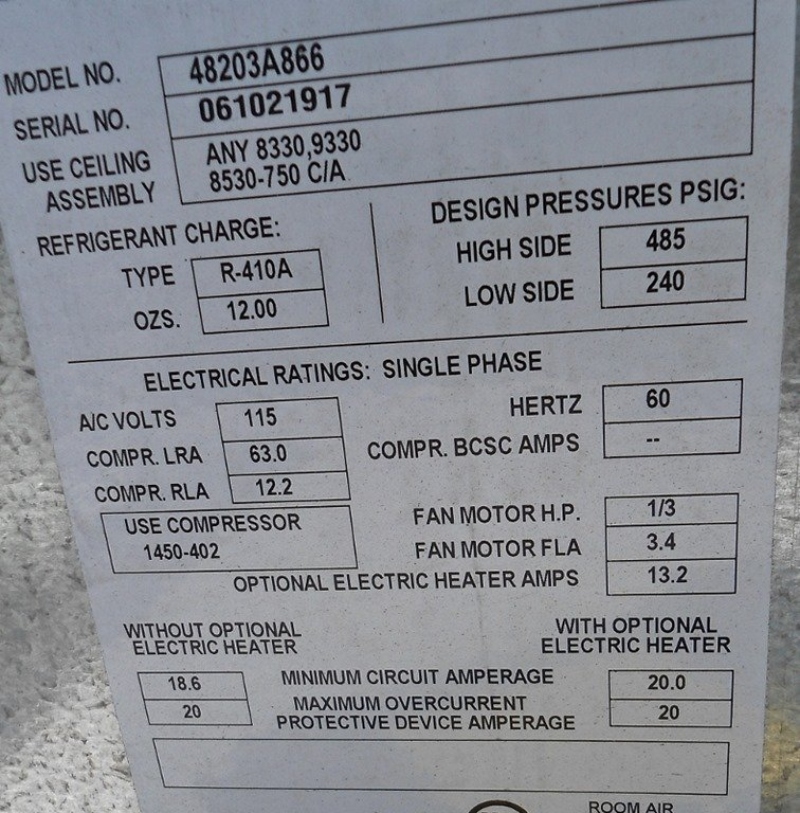
When it comes to freon, motorhome A/C holds a range of volumes, generally determined by the total output of the unit. Many motorhome owners’ manuals will not give you a specific amount of freon that should be used in your air conditioner unit. A good rule of thumb for RV air conditioners is to use 2 to 4 pounds of freon per ton of power.
Some RV A/C units will provide the power rating on the unit’s nameplate. Sometimes this nameplate will also tell you how much freon is recommended to be used in the unit. An A/C unit does not need to be filled completely to work correctly. Many air conditioner technicians recommend filling up to 80% of what is required of freon the motorhome A/C holds.
How Do I Know If My RV A/C Is Low on Freon?
There are some telltale signs that your motorhome A/C unit is low on freon. It is a bit of an annoyance when your motorhome A/C doesn’t cool down as much. However, the bigger problem is that it uses a ton of power when your RV A/C doesn’t have enough refrigerant.
This probably isn’t a big deal if you are plugged into shore power, but running your RV on battery power or a generator is a huge drain on your portable power supply.
There are two common signs that your camper A/C needs more freon. The first is that the air blowing from the vents isn’t as cold. The second is that it takes longer than usual to cool down your motorhome. You may be more aware of this factor than the change in temperature of the air coming from your vents.
How Much Freon Does My Motorhome A/C Hold?
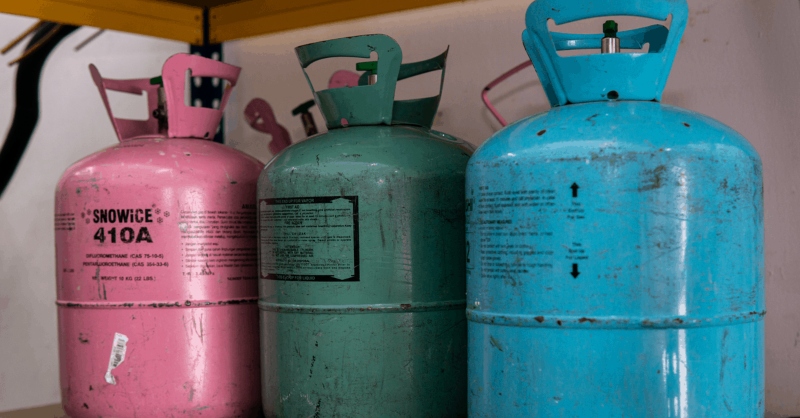
Your ability to recharge the freon in your motorcoach’s A/C unit depends on the age of your RV and the type of freon it uses. If your RV is fairly new, or if you know that your older A/C unit does not use R-22 freon, you can refill the freon yourself.
If your RV is older than 2017, it most likely uses an R-22 freon. In 2017 the Clean Air Act was updated and now requires that A/C units and other appliances that use R-22 freon must be recharged by a certified professional. Many RV dealers or repair garages will have a technician that is certified to recharge R-22 freon air conditioners.
How to Recharge Your Motorhome A/C?
If you have determined that your motorhome A/C does not have R-22 freon, you may want to know how to recharge your A/C unit. Before you start, you will need to gather some supplies.
- Cans of Refrigerant: You will want to purchase slightly more freon than your motorhome A/C will hold. Look at the unit’s nameplate or the owner’s manual to determine the type of refrigerant you need.
- Can Tap: A can tap is used to attach the can of freon refrigerant to your A/C unit.
- Vacuum Pump: A small vacuum pump is necessary for removing any air in the system before adding a new refrigerant.
- Pressure Gauge Set: A pressure gauge set is necessary to ensure that you do not overfill your A/C unit with refrigerant.
Once you’ve gathered the proper supplies, you can start the process of recharging your A/C unit.
- Make sure that you park your camper in a well-ventilated area or outdoors and turn off the engine.
- Locate the low and high side ports on the A/C unit and attach the pressure gauges.
- Open two cans of refrigerant and attach a can tap to each. Attach the other end of the can tap to the high or low side ports on the A/C unit.
- Attach the vacuum pump to the A/C unit. Open the cans of refrigerant. Turn on the vacuum pump and allow it to run for 10 to 15 minutes. This will pull any air from the A/C unit and then deliver the refrigerant to the compressor tubes.
- Turn off the pump and shut the valves on the cans of freon.
- Remove the gauges, refrigerant cans, and can tap from the unit.
- Turn on your motorhome engine and start the air conditioner to circulate the new freon.
With the engine running, you should notice your A/C unit cooling much faster and to a lower temperature if you have done the process correctly. If you do not see a difference, reconnect the pressure gauges and check for leaks.
If you find a leak in the system, make sure that you repair the leak prior to adding more refrigerant to the A/C unit.
8 FAQs About How Much Freon a Motorhome A/C Can Hold
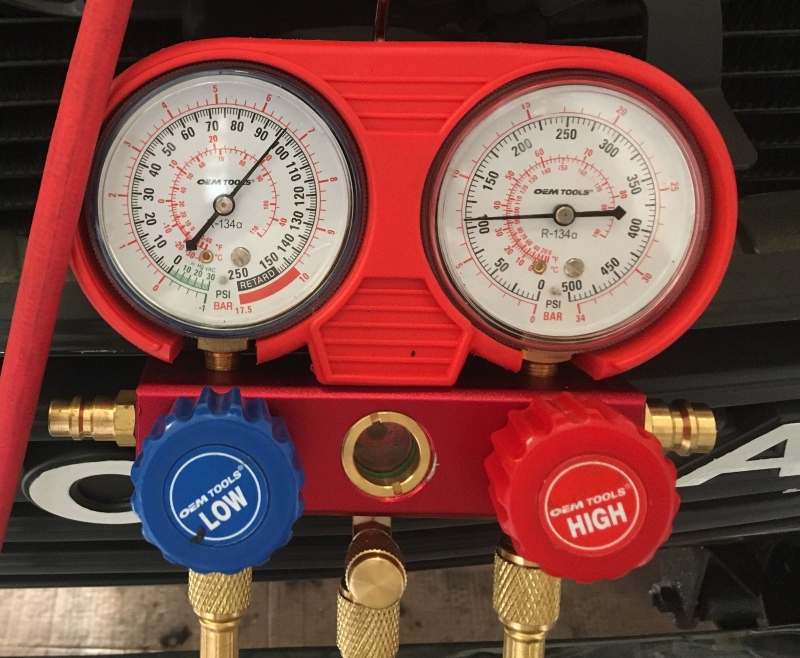
Now that you know a bit about how freon works in your motorhome’s A/C and other details, here are some answers to some frequently asked questions about how much freon your motorhome A/C can hold.
1. How Long Does It Take for Freon to Deplete?
Because your air conditioner is technically a closed system that recirculates the refrigerant, freon should never deplete. However, over time most A/C units will age and start to leak.
If you are maintaining your A/C unit properly, this may take many years. The older the A/C unit, the more likely it is to leak and need more frequent recharging.
2. What Are the Different Kinds of RV A/C Freon?
There are three types of freon motorhome A/C hold. The type that your particular A/C unit will use depends on the air conditioner’s age.
- R22: This is the most common refrigerant used in older AC units. Units filled with R22 will need to be serviced by a certified professional.
- R12: If your RV is older than 1993, there is a good chance that it uses R12. Unlike R22, you can still recharge appliances with R12 without a certified professional.
- R134a: After 1993, R134a has become the most commonly used refrigerant in RVs in North America. This refrigerant is still considered a freon. However, it is better for the environment and is noted for its low global warming potential.
3. Where Can You Buy RV A/C Freon?
If you want to recharge your motorhome A/C unit, you must locate the proper freon your motorhome A/C holds. In many cases, you can purchase RV refrigerants from online retailers like Amazon. If you need to recharge your motorhome RV while you are traveling, you can buy cans of freon from most RV dealers, repair garages, or auto parts stores.
4. Why Is My RV A/C Full of Freon But Not Cold?
There are a couple of reasons that your air conditioner is full of refrigerant but is not making cold air.
First, the compressor may not be working correctly. If the freon is not being compressed through the refrigeration circuit, it cannot heat, then condense, and cool.
The second reason that your A/C may not be cooling may be related to the thermostat. If your motorhome’s thermostat is not functioning properly, you may not benefit from a fully charged A/C unit.
5. Does It Hurt to Run an RV A/C That’s Low on Freon?
Running your RV A/C unit when it is low on freon is not a great idea. Besides being very energy-consumptive, you can cause damage to your A/C if it runs too long with low or no freon.
The compressor for your air conditioner unit needs freon in the system to function properly. You risk burning up the compressor when it runs with insufficient refrigerant. It is a good idea to service your A/C unit periodically to ensure that you maintain a good amount of freon. This will help you avoid burning up the condenser.
6. Can You Overfill Your Freon?
Your camper A/C unit will only hold so much freon. So, it is not possible to overfill the unit. However, many prefer to only fill their A/C to 80%. This gives some room for more efficient compression and space for condensed freon to return to the gas form.
7. How Can I Increase the Efficiency of My RV A/C?
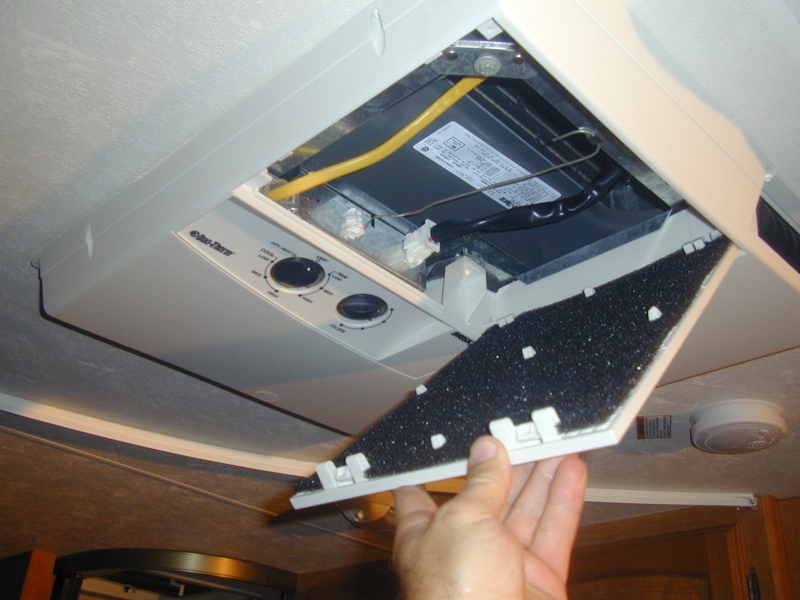
The easiest way to increase the efficiency of your motorhome A/C unit is to maintain it properly. Make sure that you keep it clean and the fins free of debris. After you’ve been on the road, use a hose to wash out the fins and A/C unit. This will allow for efficient cooling and condensation in the unit.
Recharging the refrigerant is also a good way to increase the efficiency of your RV A/C unit. This is particularly helpful if your motorhome is a bit older. You can do this work yourself or have it included in your pre-season service at your local RV dealer or repair garage.
Another way to keep your motorhome’s A/C working efficiently is to use a fin tool to fix the bent fins. The aluminum fins on your RV’s A/C unit, both the outside and inside the evaporator, are easily bent. These tools bend them back in place, allowing the unit to expel heat efficiently.
8. How Long Does It Take for Your RV A/C to Run Out of Freon?
As we mentioned previously, your RV A/C unit, in theory, should never run out of freon. However, over time the tubing and fins of the unit will age and begin to leak. Small holes in the system may cause a slow release of freon that will take a couple of years to notice. Larger leaks may cause your motorhome A/C unit to lose refrigerant over just a couple of days.
Final Thoughts on How Much Freon Your Motorhome Can Hold
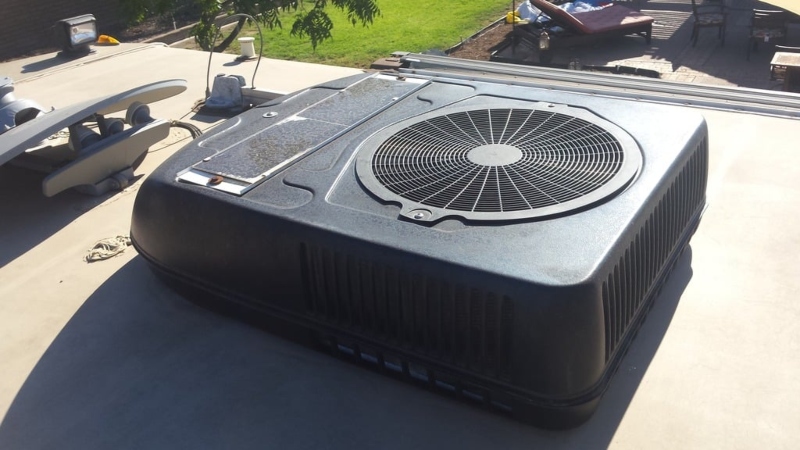
The amount of freon your motorhome A/C holds depends on the brand you have. If your motorhome is new, you may not need to worry about freon leaks or its environmental impact. Older RVs tend to lose freon over time and must be refilled by a certified technician.
Knowing how much and what kind of freon your motorhome A/C holds can save you time and money when maintaining your air conditioner. If your A/C unit is new, ensure it is properly maintained. This will give you many years of cool travel before you need to worry about how much freon the motorhome A/C holds and how to refill it.
Related Reading:
Does an RV Fridge Work Better on Gas or Electric?
NRVTA Home Study Program Review
Definitive Guide to an Extended RV Warranty for Motorhomes
About the Author:
Jason Gass is a full-time freelance writer and part-time RVer whose goal is to share great stories around a campfire with good friends.
When he’s not working, he spends most of his time camping, searching for the best breweries, and road-tripping in his teardrop trailer with his wife, daughter, and two dogs.


